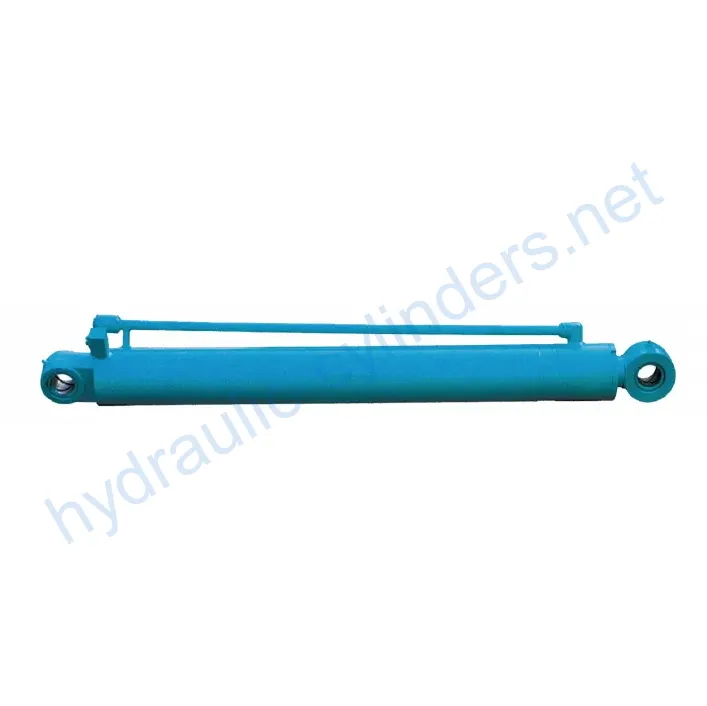Arm CylinderFor Volvo Large Excavator EC460BP
As one of the hydraulic cylinders manufacturers, suppliers, and exporters of mechanical products, We offer hydraulic cylinders and many other products.
Please get in touch with us for details.
Mail:sales@hydraulic-cylinders.net
Manufacturer supplier exporter of hydraulic cylinders.
Arm Cylinder For Volvo Large Excavator EC460BP
Definition and Explanation
An arm cylinder, also known as an hydraulic cylinder, is a specialized hydraulic cylinder designed to provide linear motion and power to the arm of various machinery, such as excavators, cranes, and robotic arms. The arm cylinder plays a crucial role in hydraulic systems, enabling efficient movement and control of additional tools or attachments. These cylinders not only ensure smooth motion but also withstand heavy loads, ensuring high operational efficiency and reliability of the machinery in various working conditions.

Features of Arm Cylinder For Volvo Large Excavator EC460BP
- High Efficiency Transmission: The arm cylinder provides powerful linear motion and force, ensuring high efficiency performance of the excavator arm in various operations.
- Precise Control: Through the hydraulic system, the arm cylinder enables precise motion control, making the operation of additional tools more flexible and accurate.
- Durability: Arm cylinders are typically made of high-strength materials, offering excellent wear resistance and corrosion resistance, making them suitable for long-term use in harsh environments.
- Multi-functional Adaptability: These cylinders can be widely applied to various machinery equipment such as excavators, cranes, and robotic arms, adapting to different working requirements.
- Easy Maintenance: The design of the arm cylinder considers ease of maintenance and replacement, making regular inspection and maintenance more convenient and reducing equipment downtime.

Applications of Arm Cylinder
Arm cylinders find applications in various industries and sectors:
- Construction Engineering: In excavators and cranes, arm cylinders are used to control the movement of buckets or booms for earthwork, material handling, and structural installation.
- Manufacturing Industry: In automated production lines, arm cylinders are used for the motion of robotic arms, enabling assembly, welding, and material handling processes, thereby improving production efficiency and precision.
- Agricultural Machinery: In agricultural machinery such as harvesters and seeders, arm cylinders control the movement of operating arms, performing tasks like sowing, fertilizing, and harvesting.
- Mining Industry: In mining equipment, arm cylinders are used to control the movement of mining arms for ore extraction and transportation.
- Logistics and Transportation: In forklifts and handling robots, arm cylinders control the lifting and movement of forks, enabling material handling and stacking.
Design Considerations and Selection Criteria
- Bearing Capacity: The arm cylinder should be designed to withstand the required load capacity to ensure safe and efficient operation.
- Sealing: Various sealing elements such as piston seals and rod seals are used to ensure proper sealing and prevent leakage.
- Durability: The arm cylinder should be manufactured using durable materials to withstand wear and corrosion, ensuring long-term performance.
- Safety: Safety features such as pressure relief valves and emergency stop mechanisms should be incorporated to prevent accidents during operation.
- Maintainability: Design considerations should include easy maintenance and repair, allowing for quick inspection and replacement of components.

Sealing and Lubrication
The arm cylinder utilizes various sealing elements such as piston seals and rod seals. These seals are made of wear-resistant materials like polyurethane and nitrile rubber. The cylinder body and threaded ends are finely treated to enhance wear resistance. Regular lubrication with appropriate hydraulic oil is required to ensure smooth operation.
Regular Inspection and Preventive Maintenance
- Regularly check for any signs of leaks, cracks, or unusual noises.
- Inspect the seals and replace them if necessary.
- Monitor the hydraulic fluid level and top up as required.
- Check the cylinder’s mounting and connections for any looseness or damage.
- Clean the cylinder regularly to prevent buildup of dirt and debris.
Product Installation Guide
1. Begin by ensuring the machinery is turned off and safely secured.
2. Identify the mounting points for the arm cylinder on the machinery.
3. Carefully align the arm cylinder with the mounting points and attach securely using appropriate fasteners.
4. Check the alignment of the cylinder to ensure proper movement and clearance.
5. Connect the hydraulic hoses and fittings to the corresponding ports on the cylinder.
6. Double-check all connections for proper tightness and secure any loose components.
7. Test the arm cylinder’s movement through the hydraulic controls to ensure smooth operation.

Safety Considerations and Environmental Factors
When using arm cylinders, it is essential to follow proper safety measures to prevent accidents and ensure operator well-being. This includes wearing appropriate personal protective equipment, adhering to operating guidelines, and conducting regular safety inspections. Additionally, environmental factors such as temperature, humidity, and exposure to corrosive substances should be considered to ensure optimal performance and longevity of the arm cylinder.
Troubleshooting and Common Issues
Some common issues that may arise with arm cylinders include:
- Leakage from seals or connections
- Slow or jerky movement
- Noise during operation
- Loss of power or force
To address these issues:
- Check and replace any damaged seals or connections.
- Inspect the hydraulic fluid level and quality, and refill or replace if necessary.
- Clean the cylinder and lubricate moving parts to ensure smooth operation.
- Check the hydraulic system for any potential issues and consult a professional if needed.

Remember to organize the article logically, use subheadings for easy navigation, incorporate relevant images or diagrams to enhance understanding, and ensure the content is clear, concise, and suitable for readers with varying levels of technical knowledge.
Author: lyl


Take a Tour of Our VR Factory:
Take a tour of our VR factory with the following
Hydraulic Cylinder Application:


